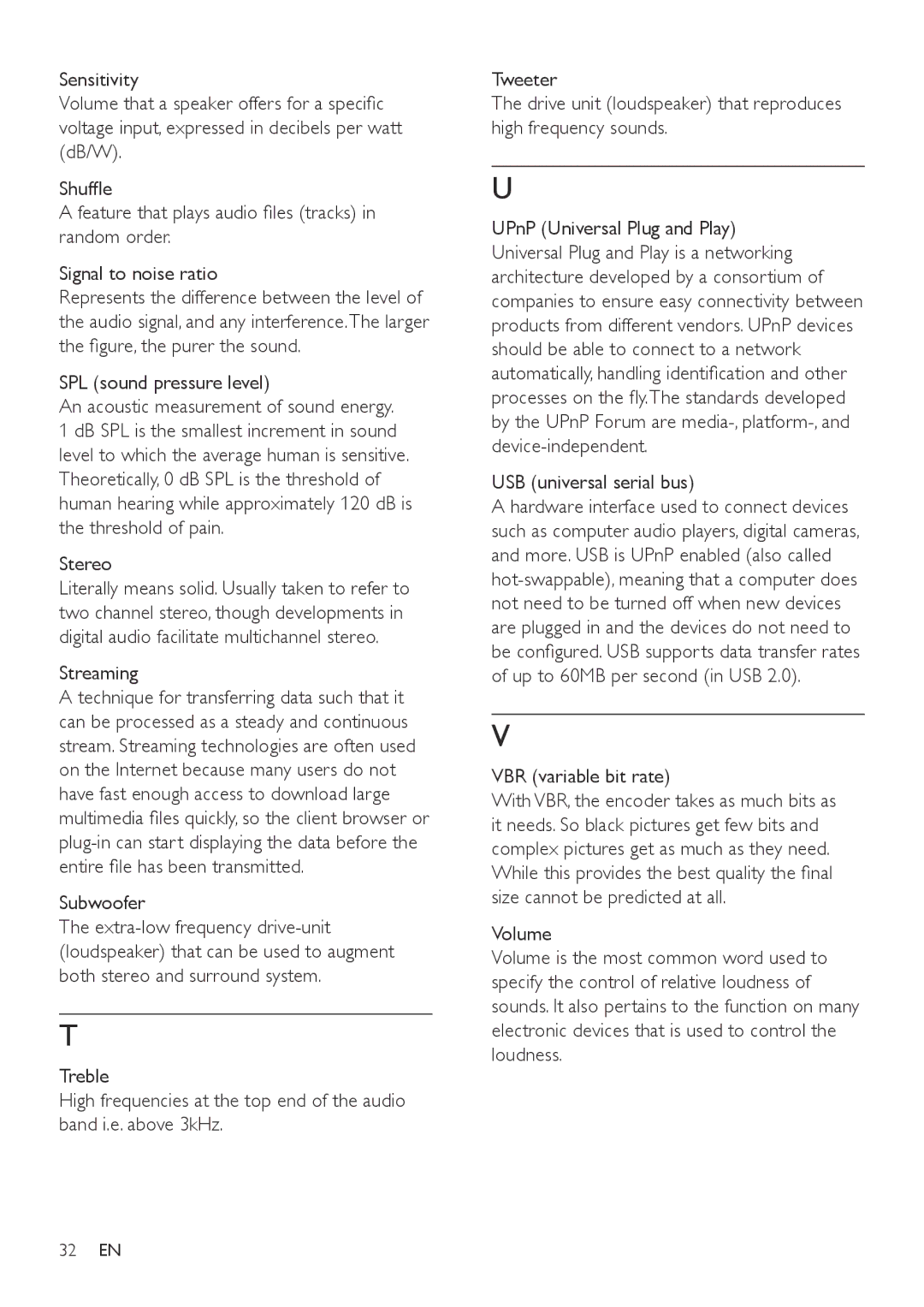
Sensitivity
Volume that a speaker offers for a specific voltage input, expressed in decibels per watt (dB/W).
Shuffle
A feature that plays audio files (tracks) in random order.
Signal to noise ratio
Represents the difference between the level of the audio signal, and any interference.The larger the figure, the purer the sound.
SPL (sound pressure level)
An acoustic measurement of sound energy.
1 dB SPL is the smallest increment in sound level to which the average human is sensitive. Theoretically, 0 dB SPL is the threshold of human hearing while approximately 120 dB is the threshold of pain.
Stereo
Literally means solid. Usually taken to refer to two channel stereo, though developments in digital audio facilitate multichannel stereo.
Streaming
A technique for transferring data such that it can be processed as a steady and continuous stream. Streaming technologies are often used on the Internet because many users do not have fast enough access to download large multimedia files quickly, so the client browser or
Subwoofer
The
T
Treble
High frequencies at the top end of the audio band i.e. above 3kHz.
Tweeter
The drive unit (loudspeaker) that reproduces high frequency sounds.
U
UPnP (Universal Plug and Play) Universal Plug and Play is a networking architecture developed by a consortium of companies to ensure easy connectivity between products from different vendors. UPnP devices should be able to connect to a network automatically, handling identification and other processes on the fly.The standards developed by the UPnP Forum are
USB (universal serial bus)
A hardware interface used to connect devices such as computer audio players, digital cameras, and more. USB is UPnP enabled (also called
V
VBR (variable bit rate)
With VBR, the encoder takes as much bits as it needs. So black pictures get few bits and complex pictures get as much as they need. While this provides the best quality the final size cannot be predicted at all.
Volume
Volume is the most common word used to specify the control of relative loudness of sounds. It also pertains to the function on many electronic devices that is used to control the loudness.
32EN
